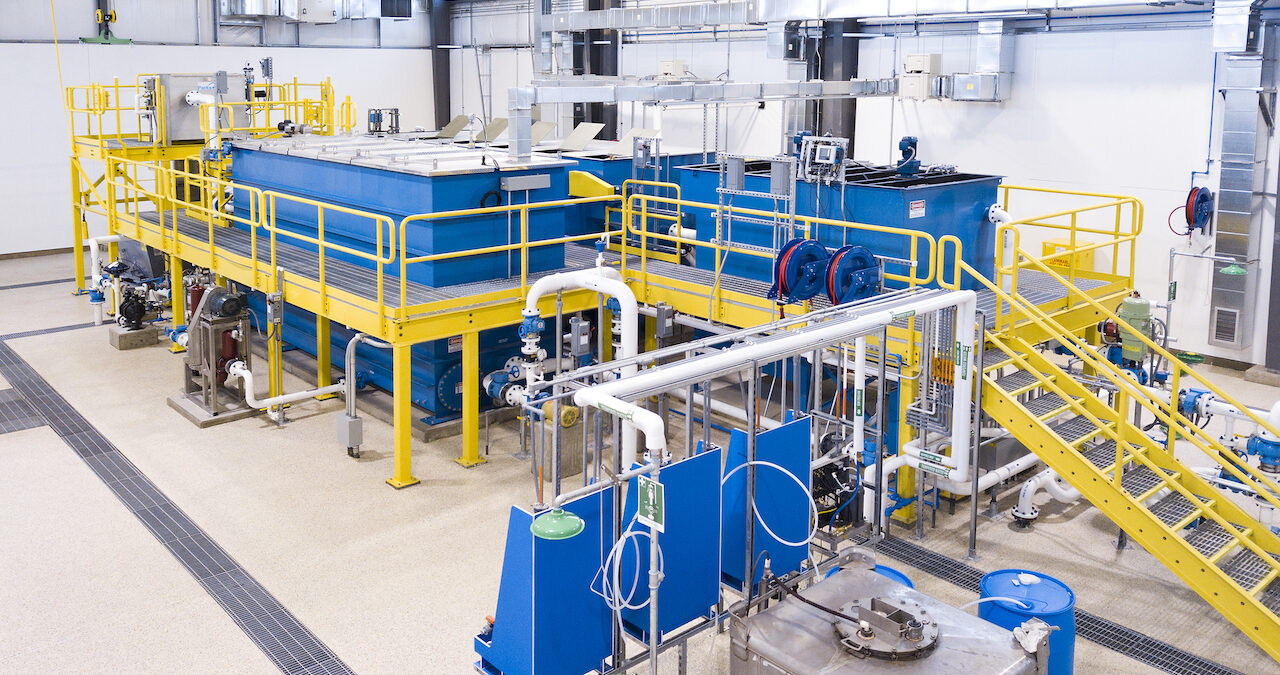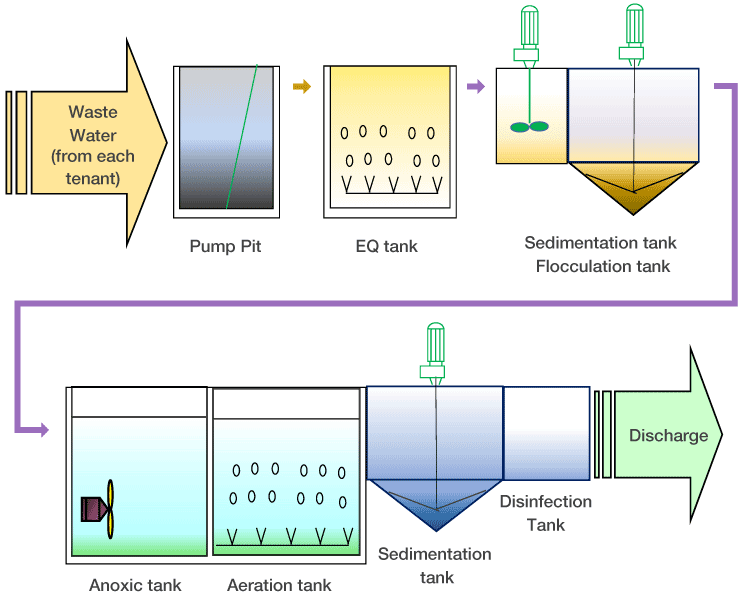Industrial Waste Water Treatment-- Cutting-Edge Technologies for Water Filtration
Difficulties and Solutions in Hazardous Waste Water Treatment
The therapy of commercial wastewater presents a multifaceted variety of challenges, ranging from strict regulative compliance to the complexities of expense administration and technological constraints. The variability in waste composition better complicates the efficiency of typical treatment techniques, typically resulting in escalated functional expenses. Emerging remedies such as advanced oxidation processes and cutting-edge funding designs reveal guarantee in attending to these problems. As industries grapple with the demand for sustainable methods, the question continues to be: what techniques will eventually bring about a balance in between compliance, cost-efficiency, and ecological responsibility?
Regulatory Conformity Obstacles
How can commercial facilities browse the complex landscape of regulative conformity in wastewater treatment? The regulative framework controling wastewater administration is multifaceted, often differing by territory and kind of market.
To effectively manage these compliance challenges, centers need to apply robust monitoring and reporting systems that guarantee real-time information collection and evaluation. Normal audits and danger assessments can determine potential compliance gaps, enabling aggressive adjustments in therapy processes. Employee training programs focusing on regulative understanding and best practices are important to foster a culture of compliance within the company.
Additionally, involving with regulative agencies can offer beneficial understandings and clarify ambiguous regulations. Facilities may also take advantage of speaking with environmental specialists that focus on wastewater treatment compliance, guaranteeing that they remain abreast of advancing regulations. By adopting these approaches, industrial facilities can not only meet compliance needs yet additionally boost their functional effectiveness and environmental stewardship.
Cost and Economic Obstacles
Browsing regulative conformity in wastewater treatment often provides substantial monetary obstacles for commercial facilities. The prices related to carrying out necessary treatment modern technologies, keeping compliance with rigid laws, and taking care of functional expenditures can be intimidating. Several organizations deal with high initial funding expenditures for the building and construction or updating of wastewater therapy plants, which might strain budgets, particularly for medium-sized and small ventures.
Furthermore, ongoing operational prices, including upkeep, labor, and chemical inputs, add to the financial burden. The changability of changing power costs and the potential requirement for extra investments to satisfy developing regulations aggravate these financial stress. In most cases, the lack of financial rewards or assistance from government bodies makes it even a lot more challenging for services to validate investments in sophisticated therapy systems.
Additionally, the economic practicality of wastewater treatment remedies is usually questioned, specifically for industries with limited revenue margins. It is critical for industrial facilities to explore economical methods, such as embracing cutting-edge funding choices, involving in partnerships, and leveraging arising innovations that can help minimize these financial barriers while ensuring compliance with ecological criteria.

Technological Limitations
Countless technological limitations prevent the performance of commercial wastewater treatment processes. One substantial difficulty is the insufficiency of existing therapy innovations to deal with intricate contaminants.
In addition, the scalability of treatment innovations postures a challenge. While some sophisticated approaches, like membrane layer purification or innovative oxidation, show pledge in regulated atmospheres, their implementation on a bigger scale can be technically difficult and much too pricey. Upkeep and functional complexities additionally complicate the fostering of these systems, specifically for smaller sized sectors with restricted technological experience.
The combination of real-time surveillance innovations also stays not enough in lots of treatment facilities. Without my link reliable tracking systems, operators can not effectively evaluate therapy efficiency or find prospective failings, resulting in irregular effluent high quality. Attending to these technical limitations through research and growth, alongside financial investment in innovative options, is vital for enhancing the efficiency of commercial wastewater treatment and making certain governing conformity.
Variability in Waste Composition
In the world of industrial wastewater treatment, the variability in waste composition provides a powerful obstacle. Industries produce wastewater with varied attributes, influenced by variables such as manufacturing procedures, resources, and functional methods. This heterogeneity complicates the treatment process, as standard systems frequently have a hard time to effectively attend to the wide variety of pollutants present.
For instance, wastewater from food handling might consist of high degrees of raw material, while effluents from chemical production can consist of hefty steels and unsafe substances. This difference requires adaptable therapy techniques to guarantee compliance with environmental laws and safeguard public health. Furthermore, variations in waste make-up can take place gradually, influenced by adjustments in production routines, maintenance activities, or the introduction click site of new items.

Ingenious Treatment Solutions
Cutting-edge therapy services are important for attending to the intricacies of industrial wastewater monitoring. Traditional methods usually fall brief in efficiently removing a vast array of contaminants, specifically in centers with varied effluent streams. Recent advancements focus on integrating cutting-edge modern technologies to improve treatment effectiveness and sustainability.
One encouraging strategy is the usage of sophisticated oxidation processes (AOPs), which take advantage of powerful oxidants to deteriorate natural toxins. AOPs, including photocatalysis and ozonation, can considerably lower toxic compounds and enhance effluent high quality. In addition, membrane bioreactor (MBR) innovation has obtained traction, combining organic treatment with membrane filtering, causing top quality effluent and lowered impact.
Another ingenious service is the implementation of resource recovery systems. Strategies like anaerobic digestion not only deal with wastewater however also generate biogas, which can be harnessed as a renewable resource resource. Additionally, the adoption of artificial knowledge and artificial intelligence versions can enhance therapy procedures by predicting variants in wastewater make-up, thereby improving functional effectiveness.
These ingenious services not only address governing compliance yet likewise advertise environmental sustainability, leading the means for an extra resistant and reliable commercial ecological community.
Verdict
In verdict, attending to the challenges of industrial wastewater treatment calls for a diverse strategy that integrates regulative compliance, cost monitoring, and technological advancements. A commitment to continuous improvement in therapy techniques will eventually contribute to the efficient management click this site of industrial wastewater and environmental protection.
The treatment of commercial wastewater presents a diverse array of difficulties, ranging from rigorous governing compliance to the ins and outs of expense administration and technical constraints. Industrial Waste Water Treatment.Navigating regulative conformity in wastewater treatment commonly provides substantial monetary challenges for industrial centers. Attending to these technical constraints through research and growth, along with investment in ingenious options, is important for boosting the effectiveness of industrial wastewater therapy and ensuring governing compliance
Wastewater treatment centers must invest in durable tracking systems and flexible therapy technologies capable of accommodating varying influent features.In final thought, dealing with the difficulties of industrial wastewater treatment calls for a multifaceted approach that integrates regulative conformity, cost administration, and technological advancements.